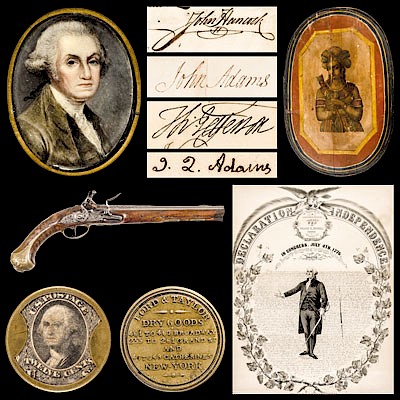1786 Portrait: Lord Keppel, Revolutionary War
Lot 176
Estimate:
$250 - $350
Absentee vs Live bid
Two ways to bid:
- Leave a max absentee bid and the platform will bid on your behalf up to your maximum bid during the live auction.
- Bid live during the auction and your bids will be submitted real-time to the auctioneer.
Bid Increments
| Price | Bid Increment |
|---|---|
| $0 | $10 |
| $200 | $20 |
| $300 | $25 |
| $500 | $50 |
| $1,000 | $100 |
| $2,000 | $200 |
| $3,000 | $250 |
| $5,000 | $500 |
| $10,000 | $1,000 |
| $20,000 | $2,000 |
| $30,000 | $2,500 |
| $50,000 | $5,000 |
| $100,000 | $10,000 |
| $200,000 | $20,000 |
| $300,000 | $25,000 |
| $500,000 | $50,000 |
About Auction
By Early American History Auctions
Jun 1, 2019
Set Reminder
2019-06-01 12:00:00
2019-06-01 12:00:00
America/New_York
Bidsquare
Bidsquare : Historic Autographs, Colonial Currency, Political Americana & Revolutionary War Era
https://www.bidsquare.com/auctions/early-american-history-auctions/historic-autographs-colonial-currency-political-americana-revolutionary-war-era-4152
Historic Autographs, Coins, Currency, Political, Americana, Historic Weaponry and Guns, John Adams, Thomas Jefferson, Early American History Auctions auctions@earlyamerican.com
Historic Autographs, Coins, Currency, Political, Americana, Historic Weaponry and Guns, John Adams, Thomas Jefferson, Early American History Auctions auctions@earlyamerican.com
- Lot Description
American Revolution
1786 Engraved Portrait of Rev. War British Lord Keppel
March 18, 1786-Dated, Engraved Portrait of British Lord Keppel, Historic Revolutionary War Era Military Figure, Published by J. Fielding, London, 1786, Engraved by Goldar, Choice Crisp Mint.
This original print measures 7.5" x 4.5" being a Plate or Frontispiece from a period British magazine. Augustus Keppel (1725 -1786), was a British Lord who held the rank of Rear Admiral and commanded the "Channel Fleet" against France at the First Battle of Ushant. A beautiful, exceptional quality, engraved portrait of British Lord Keppel by artist Joshua Reynolds's first painting of him hangs in the British National Maritime Museum.
The most important and the most debated period of his life belongs to the opening years of the American War of Independence. Keppel was by family connection and personal preference a strong supporter of the Whig connection, led by the Marquess of Rockingham and the Duke of Richmond. He shared in all the passions of his party, then excluded from power by the resolute will of George III.
As a member of Parliament, in which he had a seat for Windsor from 1761 until 1780, and then for Surrey he was a steady partisan, and was in constant hostility with the King's Friends. In common with them he was prepared to believe that the king's ministers, and in particular Lord Sandwich, then First Lord of the Admiralty, were capable of any villainy. When therefore he was appointed to command the Channel Fleet, the main fleet prepared against France in 1778, he went to sea predisposed to think that the First Lord would be glad for him to be defeated.
It was a further misfortune that when Keppel hoisted his flag one of his subordinate admirals should have been Sir Hugh Palliser (1723-1796), who was a member of the Admiralty Board, a member of parliament, and in Keppel's opinion, which was generally shared, jointly responsible with his colleagues for the bad state of the Royal Navy. When, therefore, the battle which Keppel fought with the French on 27 July 1778 (the First Battle of Ushant) ended in a highly unsatisfactory manner, owing mainly to his own unintelligent management, but partly through the failure of Sir Hugh Palliser to obey orders, he became convinced that he had been deliberately betrayed.
Though he praised Sir Hugh in his public despatch he attacked him in private, and the Whig press, with the unquestionable aid of Keppel's friends, began a campaign of calumny to which the ministerial papers answered in the same style, each side accusing the other of deliberate treason: The result was a scandalous series of scenes in parliament and of courts martial. Keppel was first tried and acquitted 1779, and then Palliser was also tried and acquitted. Keppel was ordered to strike his flag in March 1779.
- Shipping Info
-
Early American provides in-house worldwide shipping. Please contact us directly if you have questions about your specific shipping requirements.
-
- Buyer's Premium



 EUR
EUR CAD
CAD AUD
AUD GBP
GBP MXN
MXN HKD
HKD CNY
CNY MYR
MYR SEK
SEK SGD
SGD CHF
CHF THB
THB












